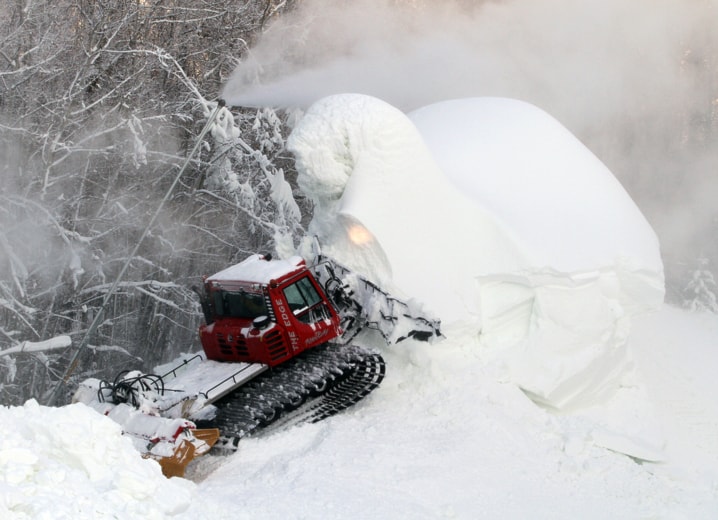A weather roller-coaster, bookended by significant snowfalls, brought highs and lows weather-wise to Central Alberta in 2013.
Bill McMurtry, an Environment Canada meteorologist, said it was a year of swings in terms of weather, with unpredictability being at the forefront.
“We saw significant swings in the weather from colder than usual to warmer than usual to drier than normal to wetter than normal, all in successive months,” said McMurtry. “It was quite a variation.”
But after the up-and-down weather of the year, Red Deer got smacked in the face and all over the ground with a record snowfall in November, as well as a record two-month snowfall in November and December.
Red Deer historian Michael Dawe said this winter has been the worst since 1942. That year, winter started with a massive snowfall on Nov. 15 and didn’t let up.
According to Environment Canada, 1924 produced the record November-December snowfall of 104.9 cm — until Monday. The two-month record was broken on Dec. 30, when Red Deer reached 109.9 cm. The average November-December snow is about 36 cm.
“We’re approaching almost three times the amount of snow we’d typically see for November-December.”
Weather statistics for Red Deer are measured at the airport.
Environment Canada records, which date back to 1904, indicate that this November was the snowiest on record for the area. A total of 62.5 cm of snow was recorded, breaking the 1996 record of 56 cm. The record for December was not broken, however, as only about 47 cm fell in 2013, which is off the 1924 record of 88 cm.
“Snowfall really stood out for the calendar year,” said McMurtry. “Typically, Red Deer receives about 116 cm. So far, it has received 190 cm. It is about 60 per cent more snow in 2013.”
The year started out promising for Central Alberta as warmer than normal temperatures dominated January and February 2013. McMurtry said both months had temperatures three degrees above normal.
“That’s a significant departure when you’re looking at a two-month period to see temperatures that much warmer than average,” said McMurtry. “But then we gave away those temperatures quite quickly because March and April were exactly the opposite, on average three degrees cooler than normal. We saw significantly cooler temperatures than what we would see in March and April.”
This meant the snow stayed longer, as McMurtry said there were about 28 cm of snow in April, which is more than the normal 11 to 12 cm.
“The winter just seemed to drag on into early spring.”
May was warmer than normal, but only marginally, while June and July were par for the course.
Similarly to temperature variance, rainfall had its ups and downs in 2013. McMurtry said while there were some wetter than normal months, May and June, they were followed by dry conditions in August and September. About 296 mm of rain fell in 2013, down from the average of 381 mm.
“Once we got into August and September, they were quite a bit warmer than normal,” said McMurtry. “Temperatures were, on average, about two to three degrees above normal and October was pretty much average.”
But 2013 closed out with a cold November and December, on average three degrees below normal, along with the significant snowfalls.
mcrawford@www.reddeeradvocate.com
